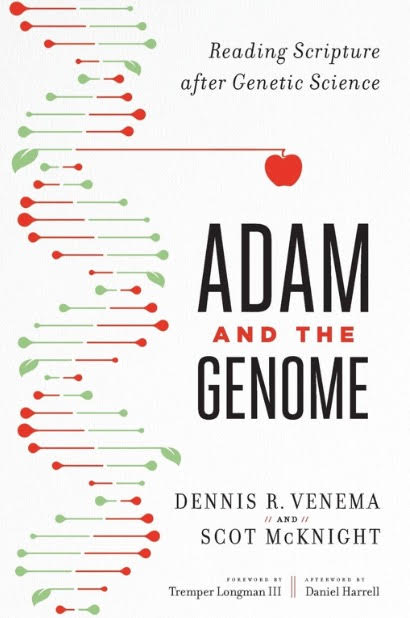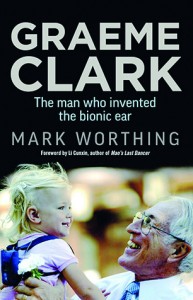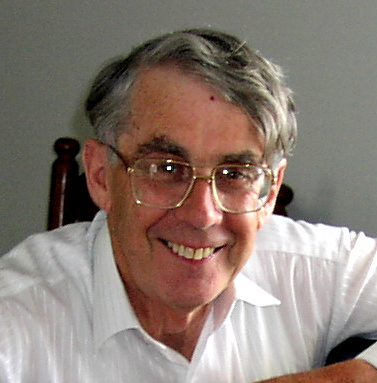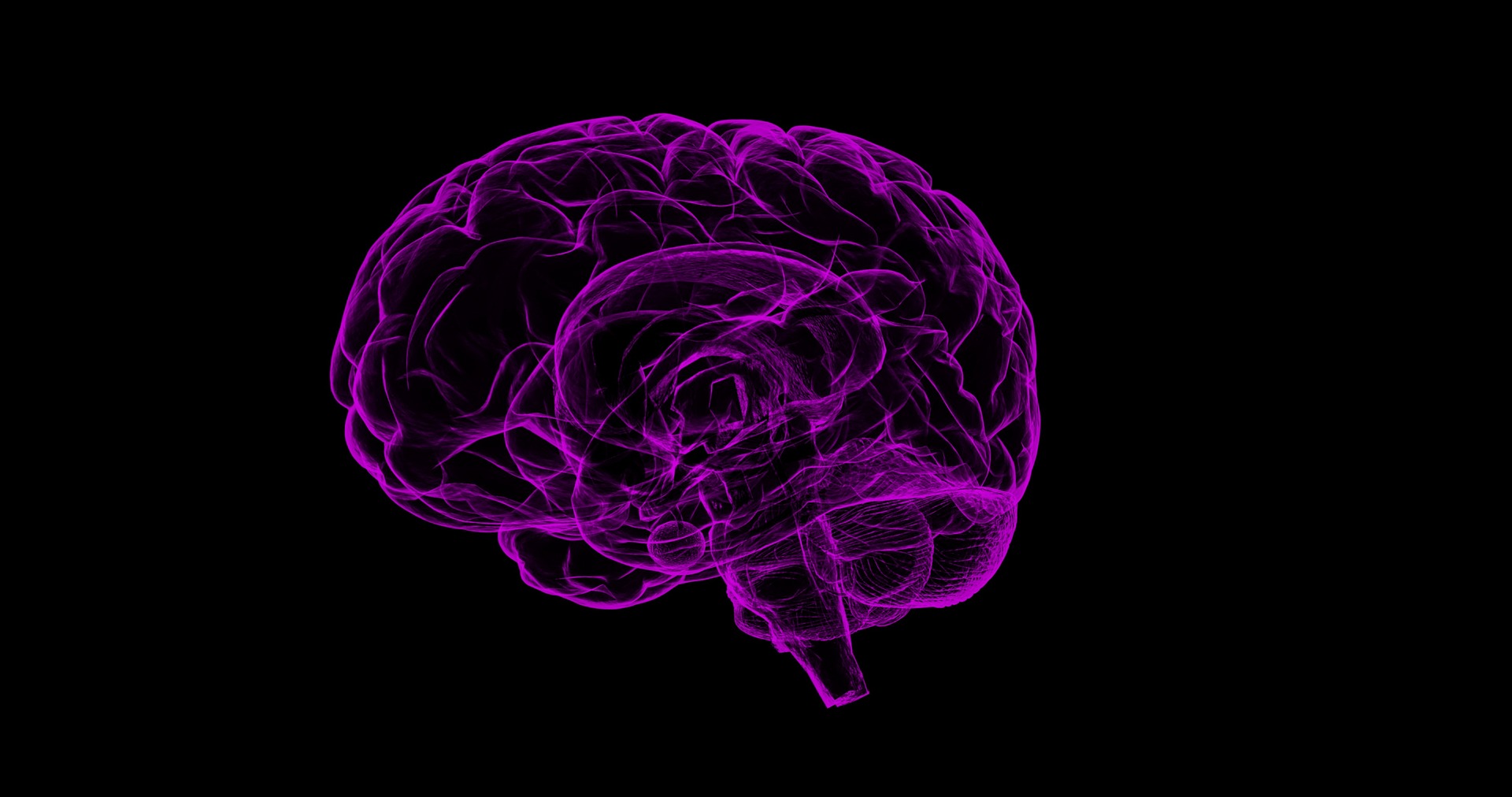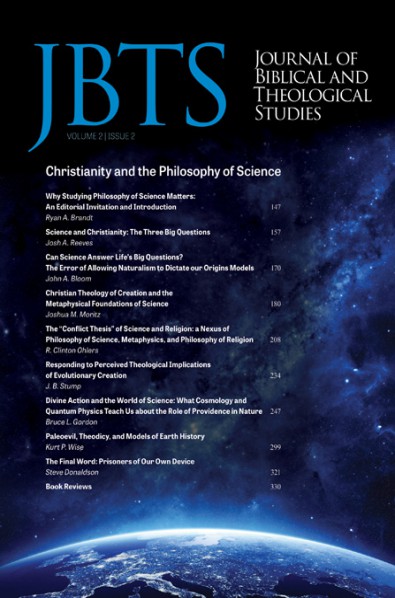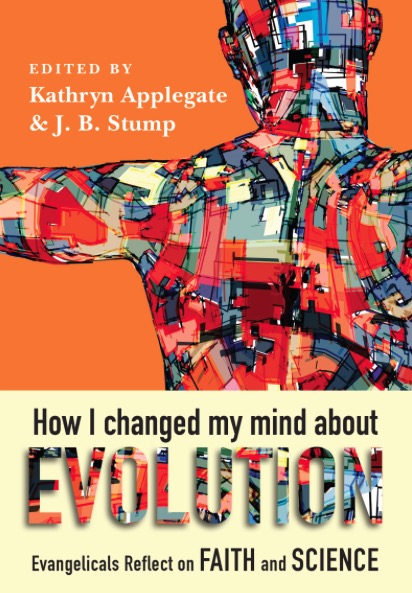


Theological Responses to Contemporary Biology
Allan J Day, March 2002
Theological Responses to Contemporary Biology
Allan John Day
Allan John Day is Emeritus Professor of Physiology, the University of Melbourne, a Senior Academic Fellow, Ridley College, and a Fellow of ISCAST.
Abstract
Recent developments in human biology have raised questions about our definition of what it means to be human. On the one hand humans are considered as something unique and distinct from other animals. On the other, detailed scientific investigation is defining the basic scientific aspects of the human person. Information from human genetics (Human Genome Program), from human evolutionary biology and from neurophysiology are increasingly describing what is considered unique in human characteristics. It is easy to conclude that we are nothing more than our genes or the responses of our neurones. These issues are considered in this essay. Firstly some of the recent developments from genetics, evolutionary biology and neurophysiology are considered and the conclusion reached by reductionist biologists critiqued. Three possible responses to these findings are addressed. We can adopt a reductionist understanding of humanity—that we are no more than our genes or neurones. This view is rejected. There is a danger however of retreating to non-scientific preconceptions of theological anthropology which envisage a dipartite or tripartite understanding with a separation of a physical body and a spiritual soul. It is suggested that these preconceptions should be reexamined. If this is done it is asserted that a biblical anthropology in both the Old Testament and the New Testament portrays a holistic understanding in which Christian hope is not dependent on the intrinsic immortality of a separate spirit or soul, but rather on the resurrection of the whole person. Such views are consistent with both contemporary biology and biblical anthropology.
Key words
Human Genome Program (HGP), genetics, mind and brain, consciousness, humanity, DNA, evolution, biblical anthropology, reductionism
Introduction
As a human biologist, my professional life has corresponded with the most remarkable revolution in the history of biology. This revolution was heralded by the description of DNA as the basis of inheritance in all living things, announced in 1953 by Watson and Crick, and it has subsequently involved the unravelling of much of the scientific fabric of humanity.
I refer to three areas in particular.
-
The first is the ongoing Human Genome Program (HGP), commenced in 1990, and having as its achievable goal the full location and sequencing of all of the human genes. The total human genetic constitution will inevitably be laid bare. This project was originally scheduled to be completed in 2005, but is already ahead of schedule. A draft sequence was announced in 2000 to great fanfare on both sides of the Atlantic.
-
The second area is the application of molecular genetics to the investigation of human origins. It is now well accepted that modern humanity (Homo sapiens, us) developed in East Africa some 150000 years ago and spread throughout the world to become evolution’s most successful species.
-
The third area is the investigation (by physical methods) of the mind and of consciousness. Contrary to general perception, psychology has moved in the last 30 years from its emphasis on behaviourism to take its place as a hard science—to espouse a neurophysiological approach to mind. As such it has tightened the physical link between mind and brain, between body and soul.
Implications for our understanding of humanity
These developments have taken much of the mystery out of the biological nature of humanity and ensured that the question ‘what does it mean to be human’ is a contemporary one in the scientific debate.
Unfortunately they have been perceived by the general public as demonstrating a ‘reductionist’, even determinist view of humanity: that we are nothing more than our genes, or that our morality and identity as persons is nothing more than the sum of our nerve cells and of their interaction. This view has been conditioned largely by the metaphysical views of a number of vocal scientists.
Jacque Monod in his brilliant book Chance and Necessity (Monod 1972) speaks of the purposelessness of man, whose origin lies at the mercy of blind chance.
Richard Dawkins promulgates a view of man as a ‘replication bomb’ serving simply as a vehicle to pass on the ‘selfish gene’ (which is of course the title of his widely quoted book) (Dawkins, 1989).
EO Wilson, the social biologist, promotes a philosophy which equates morality with genetic determinism (Wilson 1975, p. 2).
While Francis Crick in his recent book The Astonishing Hypothesis
indicates that the astonishing hypothesis is, and I quote:
…that your joys and sorrows your memories and your ambitions, your sense of identity and freewill, are in fact no more than the behaviour of a vast assembly of nerve cells and their associated molecules.
(Crick 1994 p. 3)
This is what you are as far as Crick sees it. You can’t get more reductionist than that, with respect to the basic aspects of humanity.
These are serious challenges mounted in the name of science to a Judeo Christian view of humanity. But what is a Judeo Christian view of humanity?
Crick writes in the introduction to this book:
Most religions hold that some kind of spirit exists that persists after one’s bodily death…
and then some lines further on he adds:
…there is broad agreement (in religions) on at least one point. People have souls in the literal not merely metaphorical sense.
Crick however presents a somewhat naïve description of Judeo Christian anthropology. He sets up a complete straw man, which he then proceeds to demolish with his particular picture of humanity. Yet Crick is not entirely wrong in his assumption. Many Christians would strongly defend a dualist model of humanity. A bipartite or even tripartite concept of humanity, in which a spirit or soul is conceived as having an independent existence, is prominent in medieval and patristic theology. Such a view however is a product of Greek Platonist thought and of Cartesian dualism—the separation of matter and mind/spirit rather than of any basic Christian understanding. Such a dualism however is integral to much of Eastern religion and to New Age concepts. The concepts of reincarnation, those of a world soul and of out of body experiences and astral travel depend on such dualism and are widely espoused in today’s postmodern society. It is interesting to note that Paul Davies in a talk given at a recent Melbourne writer’s festival, comments that the threat to rational science today does not come from conventional religion, but from New Age concepts.
Despite the misconceptions about views of humanity rightly or wrongly attributed to various religious adherents, it must be asserted that the Hebrew view of man has always been a very earthy one, with the emphasis on humanity as a unity—a view in which humanity is envisaged holistically. This whole person is seen as dependent for existence and future hope on the creative activity of God. The Christian view of humanity, as seen in the creeds of the church and in both the Old and
New Testament Scriptures, is also very much a holistic view. Humanity is not an amalgam of mind and matter, of body and soul, but rather a whole person who owe both their creation and purpose to God.
We need to look again therefore at our view of humanity, not just as an esoteric exercise, but as a response to some of the findings of modern biology.
Let me return to the three biological areas mentioned above and consider what is known and what the implications of this knowledge are for an understanding of humanity and how one might respond as a Christian to some of the issues. Let us look first at:
Human genetics and the HGP
This is, biologically at least, the most fundamental level. Genetic technology has now made it possible to determine who we are in terms of our genes. These are not mystical life entities, but basic chemical (DNA) compounds. Genetic anthropology thus focuses on our fundamental chemical basis and us as basic chemical entities. Let me give a brief historical overview.
In 1953 Watson and Crick demonstrated the basic genetic code. Two strands of DNA were linked by 4 bases (Adenine, Guanine, Cytosine and Thymine). These were linked in such a way that Adenine/Thymine and Cytosine/Guanine were always bonded together so that the two strands were mirror images. The 4 bases strung along a single strand could be arranged in a variety of sequences of 3, which coded for protein synthesis, each set of three representing a code for an amino acid to be linked in a particular sequence to form a protein. There was thus a simple genetic code, capable of an almost infinite variety of sequences. An alphabet of 4 letters (bases) formed simple 3 letter words strung together in longer or shorter sentences that made up a gene, which coded for protein synthesis. Life had been demythologised, reduced to chemistry. Thus all biological species from the most simple organisms through to and including humans were shown to have a common genetic basis, differing only in detail and complexity. All living things have a common history in evolution. There are differences in degree only from humanity to primates, 98% of our DNA is common.
This laid the foundation in 1973 for so-called genetic engineering, the manipulation of DNA to produce new characteristics and individuals. The synthesis by cloning techniques of human genes, which can be used to replace deficient genetic functions in individuals so affected, is now feasible, as is the use of Human Gene Therapy—using both Somatic Cells and Germ Cells.
In 1997 Ian Wilmut reported the successful cloning of a sheep (Dolly) by adult nuclear cell transfer. Considerable expertise exists with human embryo techniques from the IVF program, so that it is reasonable to assert that the technology for human cloning is now potentially available (Wilmut, 1997).
The wealth of human and animal techniques available make genetic engineering a powerful tool in the manipulation of biological nature. It also forces us to consider the nature of being human and the implications of humanity for any biological manipulation.
As indicated above the Human Genome Program was started in 1990. Costing $3 Billion and based at the National Institute of Health (NIH) in Washington, but with contributions from many countries, it aims to determine the complete human genetic constitution and their functions. There are 23 pairs of human chromosomes, 1.5 million ‘potential’ genes, but approx 100000 actual genes. These are to be sequenced and localised and their function determined. We have been potentially laid bare.
At present physical mapping of the gene locations is virtually complete and DNA sequencing of much of the total genome has been completed. A draft map was announced in 2000 in a transatlantic news conference in the presence of Tony Blair and Bill Clinton. The basic foundational work has all been done and the development of more rapid sequencing techniques has ensured that the project will be completed before the scheduled time.
The use of this information and development of techniques to manipulate individual genes ensures continued challenges for biological scientists.
There are limitations however. It is commonly believed that genes are related to their effect in a one to one direct way. This is far from true. Genes fall into several groupings.
Determinant Genes—these code for a particular character or produce a particular abnormality. e.g. Familial Hypercholesterolemia, Cystic Fibrosis etc. These are rare.
Many genes are risk genes, which promote an increased risk for some types of breast or colon cancer or for heart disease. These are not absolute determinants but indicate increased risk.
Many characteristics, which are genetically affected, however derive from multiple individually very weak gene sequences. These include athletic ability and intelligence.
It must also be emphasised that genes must be expressed or turned on, and that their expression has a considerable environmental component. They interact with the environment with the genetic component being relatively modest.
The possibility of genetic engineering and of a ‘Brave New World’ in the way often understood is therefore not supported by science.
Francis Collins, Director of the HGP, writes:
Additional concerns (to the HGP) relate to the fear of widespread use of genetic technologies to select the characteristics of our offspring. Many such scenarios are scientifically implausible, as the genetic contribution
to characteristics such as intelligence and athletic ability derive from multiple individually very weak gene sequences, which all heavily interact with the environment to produce only a modest effect on the outcome’.
(ASA CI, 1998)
Genetic technology however raises both ethical and theological questions about the nature of persons. Are embryos persons, for example? This question is of particular relevance to embryonic stem cell research, which requires the use of human embryos for stem cell harvesting, with the subsequent death of the embryo. Embryo experimentation is legally prohibited in Australia, but these issues are currently being explored. The other issue is one of Genetic Reductionism. Is our humanity described in toto by our genetic constitution? Are we nothing but our genes? This contention is however neither scientifically supportable nor theologically acceptable. There is no basis for this view from genetics itself as previously indicated. What determines our personhood is influenced by our genes, but it is also influenced by our environment, our relationships etc.
Dr Hapgood (past Archbishop of York) comments:
In the study of human life the confusion about building blocks and finished product is particularly disastrous. One of the most striking characteristics of human life as actually lived and experienced is its open-endedness. To be human is to be unfinished and free. This is a theme well explored in Christian theology. ‘It does not appear what we shall be, but we know that when He appears we shall be like him, for we shall see Him as He is’ (1 John 3:2). St John’s whole epistle is a profound exploration of the intimate relation between human life and God’s life, of the idea that human beings find fulfilment and completeness only in loving and being loved, and that overarching our human loving is the infinite love of God. We cannot know what we are in any final sense until we meet that love face to face.
(Nelson, 1994, pp. 93, 94)
Furthermore gene effects are commonly multiple and not determinant— see above. Nature and nurture are both important and neither remove moral responsibility or freewill. This is part of being human.
Let me quote Francis Collins again:
From the Christian point of view one of the more sinister trends is the assertion in some quarters that our personalities and even our daily decisions are irrevocable consequences of our DNA sequences. Some extreme versions of this model seem to threaten the very concept of freewill, and leave little room for man’s interaction with a personal God. As scientists, we must vigorously explain that such views are in total conflict with the actual data.
(ASA CI, 1998)
Three areas in respect to morality have been the subject of particular attention and of public interest. They are Criminality associated with the extra Y chromosome etc., Alcoholism with its genetic predisposition in particular persons, and Homosexuality and the so-called ‘gay gene’. While we must not deny that in a number of these cases there is a genetic component, the scientific truth is often distorted to assert genetic determinism.
Let me illustrate briefly with the position re homosexuality and the ‘gay gene’. This is of current interest in respect to the Lambeth decision. Three lines of evidence exist (Jeeves 1997, pp. 85ff.).
Twin studies: Studies in monozygotic twins (MZT) indicate a greater correlation than in dizygotic twins (DZT). While there is not a 100% concordance, there is definite evidence of a genetic influence.
The study of Hamer (Hamer 1993) has added weight to this possibility with a demonstration of homosexual orientation among male relatives in pedigree studies. In a linkage study using DNA markers on the X chromosome they found a convincing correlation between homosexual orientation and the inheritance of polymorphous markers at the Xq28 sub telomeric region of the long arm of the X chromosome. This is what has been labelled the gay gene (Hamer, 1994).
John Bancroft, a distinguished reproductive biologist and author of Human Sexuality and Its Problems, commented on these issues in a recent review on homosexual orientation.
This was not as the media chose to call it, a gay gene but persuasive evidence of a genetic factor or factors, which in this section of the gay community at least, are sex linked…it is unlikely to be a gene which determines sexual orientation per se.
(Bancroft, 1994)
It might be added that the studies of Hamer cited above have been unable to be confirmed by other workers.
Brain areas have also been suggested as sex orientation ‘centres’. Several areas have been variously incriminated (in the 1st interstitial nucleus of the Hypothalamus (HT) as well as other portions of the HT, in the corpus callosum and in the preoptic area). These findings however are confused and as Bancroft concludes, ‘there is a lack of either consistency or replication’.
There is, as for many personality and other human characteristics, evidence for a genetic conditioning, a genetic predisposition, but it is neither so definite or determinist as is suggested by much of the publicity.
Personality, Intelligence are also conditioned by genetics (much more than was previously realised) but such a genetic influence is a conditioning one not a determining one. This may even apply to spiritual conditioning.
Elving Anderson (Psychologist from U/Minneapolis) comments,
‘Even our capacities for moral and spiritual activity may be genetically conditioned’.
We cannot deny that our genetic uniqueness as humans depends on only a 2% difference in DNA from higher apes. But we must resist the temptation to reductionism—to reduce our personhood to a purely genetic frame, expressed simply in a rearrangement of the order of bases in our genes. Genetics provides a partial anthropology. It is anthropology viewed from the genetic window. It does not form a sufficient basis for the consideration of human worth. There are other windows.
Human Evolution
Human Evolution emphasises humanity as a product of human evolution having a unity with lower animals but evolving both in a genetic sense and in a cultural sense. Evolution however includes not just physical characteristics, but also religious capacity, language capability and also the generation of self-consciousness and freewill. The major physical aspect of human evolution is the increased cerebral cortex, but this has implications for the ‘non physical’ (mind/soul) characteristics. Both the capacity for language and the capacity for freewill (rather than determinism) may be the result of both genetic and cultural evolution. The evolution of the physical faculties for speech may be accompanied by the development of specific language skills determined by cultural factors. i.e. the capacity for speech is genetic but the capacity to speak Japanese is cultural.
These conclusions or this picture of humanity may be threatening for some Christians. However it needs to be emphasised that physical anthropology does not give a complete picture of humanity any more than does genetics. Anthropology does not say that humanity are not created by God, but rather that an explanation of origins, including higher (unique) aspects of humanity can be explained by natural mechanisms and that we have a continuity with lower animals.
Mind and brain
There is an emerging new reality in humanity—not possessed by lower animals. This is the property of self consciousness, the mind. This reality however is expressed through the body (brain) and cannot be considered scientifically as a separate ‘substance’. It can be the subject of investigation and observation and is now seen to be integrally related to the brain, not separate from it. Recent developments indeed have seen a closing of the mind/brain link. This is illustrated by many observations of increasing sophistication.
-
Broca 150 years ago described areas of the brain (left frontal cortex) associated with speech problems, the ability to understand or communicate.
-
The study of Phineas Gage, (1848) whose dramatic injury to his frontal lobes resulted in definitive personality change.
-
Pychotrophic drugs have an effect on personality as does schizophrenia. These can both be linked to physical or chemical brain changes.
-
Differing levels of various transmitters (changes in the chemistry of the brain) are associated with mood disorders.
-
Neurophysiological changes accompany the perception of faces etc. in experimental animals
-
Spiritual experiences can be observed physically in the temporal lobe
Thus cognitive, affective and volitional aspects of personality can be shown to be expressed though the brain (body). Mind thus cannot exist independently of the physical substrate of brain. There is no basis therefore for a separate existence (substance) of the ‘Soul’. This is not to say that the concept of ‘soul’ as the ‘I’—the person—is not helpful, but simply to say that neuroscience gives no basis for Cartesian Dualism, ‘the ghost in the machine’, the separation of matter and soul (mind) as two entities. Although this would be the contention of most neuroscientists there are a few that still espouse a dualist (body/ mind) view. Foremost among these is the Nobel Laureate Jack Eccles.
In jettisoning dualism and considering that the mind is expressed by the brain is not however to endorse monism—the contention that the mind is reduced to the brain. It is rather to emphasise a non-reductive physicalism or a dual aspect monism.
There are other biological pictures of humanity: physiological, psychological, social etc. These are all different biological pictures. They give different and complementary views of humanity. None give a complete view, they complement each other. All are needed to provide a complete view. In many ways as we move in any consideration of humanity from the most basic (genetic) picture to those with complex systems (social and religious) we see new and emergent properties appearing that cannot be described or reduced to the level of genetics or systems.
Some responses to biological anthropology
The fundamental question is: ‘Do these pictures exclude a theological anthropology or are there serious conflicts with such a picture?’. It is an important issue since a theological anthropology, informed by Scripture forms a basis for our concept of human worth and dictates our ethical restraints with regard to the manipulation of humanity. On the other hand we must take seriously the findings of modern biology in relation to humanity.
Three possible responses are possible and indeed need to be considered. The first is to reinforce reductionism—we are nothing more than our genes or neurones. The contentions of several reductionist scientists— from evolutionary biology, from social biology and from genetics and neuroscience have already been alluded to. All are vocal exponents and all
seek to reduce humanity to its basic component parts. What can one say by way of critique of such reductionism?
-
It can be experimentally asserted that we are shaped by both Nature and Nurture, by genetics and environment.
-
We are not described even biologically by chemistry (even DNA chemistry) alone. There is an emerging complexity at each level of biology.
-
The description at each level is complementary, the whole picture being more than the sum of the parts. The physiological description cannot be reduced to a physico chemical, or a behaviorist view to a genetic.
-
There are many levels of organisation. There are many different scientific viewpoints from which we can observe and define humanity. To this can be added the social and theological levels also. There are emergent realities, levels of organization.
This can be illustrated by the following diagram essentially adapted from Peacocke (Peacocke, 1996).
LEVEL 1—PHYSICAL
Physics Chemistry Biochemistry Linked via DNA and Molecular Biology with
LEVEL 2—BIOLOGICAL
Cytology Cell Biology Physiology Ecology Linked via Cognitive Sciences (Neuro biology) and Sociobiology
(Behaviour Genetics) with
LEVEL 3—BEHAVIOURAL
Consciousness Cognition Reasoning Social Psychology Linked via Philosophy and Theology to
LEVEL 4—HUMAN CULTURE, RELIGION
Linguistics Arts Ideation Worship Morality
Each level is expressed through the mechanisms of the lower levels but is not reduced to them. Each level represents a new reality more than just the sum of the individual constituents.
The second response to the developing biological picture of humanity is to adopt a siege mentality—to cling to outmoded models that are based not on truth but on presuppositions.
Many Christians consider immortality to be intrinsic, an expression of the presence of a spiritual substance infused at conception—a soul. It needs to be asked whether this is consistent with biblical theology or just an overhang from Platonist metaphysics. It certainly presents a conflict with the modern scientific understanding of mind. We need to review therefore, not reject, theological (biblical) anthropology.—to revise presuppositions about humanity.
We need to learn from history. Galileo forced a reexamination of concepts of a central earth as Darwin did of a static creation. There is a need to relook at biblical revelation with respect to humanity and to determine what is the theological picture of humanity.
Biblical anthropology
How then might we view humanity from a biblical or Judeo Christian viewpoint? Scripture views humanity from a different perspective than does biology. It is concerned with purpose—not description or mechanism. Further, Scripture complements not conflicts with biological pictures of humanity.
There a number of key elements of a biblical anthropology that can be highlighted. Humanity is created by God. Therefore humanity is part of the created universe, but is not God. Humanity is one with nature and animals. There is a continuum in the Gen 1, 2 record. Humanity is however made in the ‘image of God’, therefore has a special place in creation. ‘Imagio Dei’ is used sparingly in Scripture. It does not imply creation in God’s ‘physical image’, but there are several aspects that are involved. These include self consciousness, i.e. mind, freewill, self determination, moral responsibility, character. Two aspects in particular however are paramount.
Relationship: Gen 1:26–28 and Gen 2,3. There is a 3 level relationship. Humanity is created in relationship with humanity (male/female), with the rest of creation and with God.
Representative ‘tselem’—describes an image in the market place, representing the emperor: to look after and care for the whole of creation. In Judeo Christian theology, humanity has been elevated not to a centre stage role to dominate nature as frequently caricatured, but as a steward to look after the interests and to care for the whole of creation. ‘Playing God’ or ‘interfering with nature’ are emotive terms often used in the genetic debate, but need to be seen in the context of this stewardship role. Scientists have a theological mandate to act (but not a mandate to pursue an agenda that is contrary to principles of justice and respect for humanity as the object of their technology) as part of a theology of stewardship.
What does Scripture say about the nature of humanity? What about the soul?
Gen 2:7 ‘God breathed… became a living being (nephesh)’ portrays humanity as of the earth—at one with nature. ‘Earth to earth’ is emphasised in the funeral service. Humanity is given life by God— ‘nephesh’ (living being) means life (not soul). Cf. Gen 1:21. Life, emotions, heart, are all involved and are translations of ‘nephesh’. The picture is of a unity—given life by God, one person made in the image of God. The Hebrew view of man was a very unitary one. We are pictured as dependent for life and immortality on God. Such a picture persists throughout the Old Testament.
What about the New Testament? Greek Culture was Platonist giving rise to a dipartite or tripartite model of humanity. Humanity was envisaged as having both a spiritual and a somatic component. The spiritual component was eternal and survived, while the somatic was downplayed and evil. NT Scriptural terms are derived from Greek culture, but the NT concept of humanity does not differ from the Hebrew unitary view of humanity.
Body (soma), Soul (psuche), Spirit (pneuma), are often used singly or together in the NT to express the whole person. They can be considered as different aspects, three views, of the one person, but not as different parts or substances. It is of interest to point out that the NT word psuche is most frequently translated ‘life’ (37 times) with a number of other translations (such as ‘heart’, ‘man’, ‘being’), compared to ‘soul’ (25 times). The latter term when used is frequently equated with the whole person. Christian immortality and hope does not reside in any immortal soul but in the resurrection of the whole person by a sovereign act of God (1 Cor. 15). Paul’s interpretation of immortality is always as resurrection of the whole person as a spiritual body, not of a disembodied spirit or soul. This is of course the clear statement of the Creeds.
Bube sets it out well. Humanity viewed from three perspectives:
TERMS FIELDS CHARACTERISTICS MANIFESTATIONS
BODY (soma) Chemistry DNA, Genes Looks Human Biology
SOUL (psuche) Psychology Self Consciousness Acts Human Sociology Emotions, Mind
SPIRIT (pneuma) Theology Spiritual Relates to God
Conclusions
What then can we conclude?
Biology and Theology give different but not contradictory views of humanity.
They are not in conflict although certain presuppositions may be. They represent complementary views. A biblical understanding of humanity confers a mandate on humanity to manipulate nature. Such a mandate is not intrinsic, it is related to humanity’s place in creation. The theological
picture of humanity also sets limits for this manipulation again related to the place and potential of humans made in the image of God.
Theological anthropology is informed by the scientific understanding of humanity as exposed by biological study. It is not, however, replaced by the biological view of humanity.
Rightly understood a biblical anthropology has much therefore to contribute to a full picture of who we are as persons and is discarded at our peril as we move into the new territory of molecular genetics with its increasingly powerful technology.
Bibliography
American Scientific Affiliation and Christians in Science, 1998, ‘Science and Christianity in the new millenium’, Proceedings of ASA CI Science Meeting, Cambridge. cited in Brown WS & Jeeves, MA, 1999, ‘Portraits of Human Nature: reconciling neuroscience and Christian Anthropology’, Science and Christian Belief, 1999 11(2):139-150.
Bancroft, J, 1989, Human sexuality and its problems, Churchill Livingstone, Edinburgh. Bancroft, 1994, ‘Homosexual Orientation’, Brit J Psychiatry, 164, pp. 437-60.
Bube, R, 1995, Putting it all together, University Press of America, New York, p.103. Crick, F, 1969, The astonishing hypothesis, Simon and Schuster, London.
Dawkins, R, 1989, The selfish gene, Oxford University Press, Oxford.
Eccles, J, 1985, Mind and brain: the many-faceted problems, Paragon House, St Paul MN.
Guttmacher, AE, Collins, FS 2005, ‘Realizing the promise of genetics in biomedical research’, JAMA, 294(11) pp. 1399-1402.
Hamer, DH, Hu, S, Magnuson, VL et al, 1993, ‘A linkage between DNA markers on the X chromosome and male sexual orientation’ Science, 261 pp. 321-327.
Jeeves, MA 1977, Human nature and the millenium, Baker, Grand Rapids. Monod, C 1994, Chance and necessity, Collins, London.
Nelson JR, 1994 On the New Frontiers of Genetics and Religion. Eeerdmans, Grand Rapids Peacocke, A., 1996, God and Science, (SCM, London, 1996), pp. 46-70
Wilson, EO, 1975, Sociobiology, the new synthesis, Bellknap Press of Harvard University Press, Cambridge,MA.
Wilmut, I, Schnieke, AE, McWhir, J et al, 1997 ‘Viable offspring derived from fetal and adult mammalian cells’, Nature, 385 pp. 810-813.
Further Reading
Brown, WS, Murphy, N and Maloney, HN 1998, Whatever Happened to the Soul, Fortress, Minneapolis
Jeeves, MA, 1996, Human Nature at the Millenium, Baker, Grand Rapids.
